FULL SUN
Full sun, in fall, winter, & spring
pH
neutral -slightly acidic
FEEDING
Heavy Feeder. Nitrogen, Phosphorus, Pottasium
PLANTING
Fall. October is best.
The stinking rose is a perfect addition to the fall/ winter garden. Garlic was given this nickname because of its bud-like appearance and strong pungent smell. Garlic or Allium sativum has an interesting cross-cultural history and has been enjoyed for centuries among different civilizations. It has been associated with strength in various cultures— such as Egypt, Greece, and Rome. In Ancient Egypt, the heavy laboring working class was fed garlic, specifically to help them gain strength for building the pyramids. Garlic cloves were also found in King Tutankhamen’s tomb, although the reason for this is unknown. Greek and Roman soldiers were given garlic before battle, and therefore garlic is associated with war for those two cultures. In addition, the first Olympic Athletes in Greece were given garlic before they competed. Although used medicinally in Rome, the first evidence of garlic used as a medicinal force occurs in East Asia, specifically China and Japan.
Today most cultures use garlic as part of the flavor profile for a huge variety of dishes. It is know for its immune boosting properties. Allicin, the organosulphur compound in garlic that has antioxidant properties, reduces inflammation and is anti-fungal. However, Allicin is unstable and is only available in fresh garlic right after it has been crushed or cut. Thus, homegrown garlic means a better chance of getting the benefits of allicin.
Adding garlic to the desert garden, is easy but takes a little bit of know how.
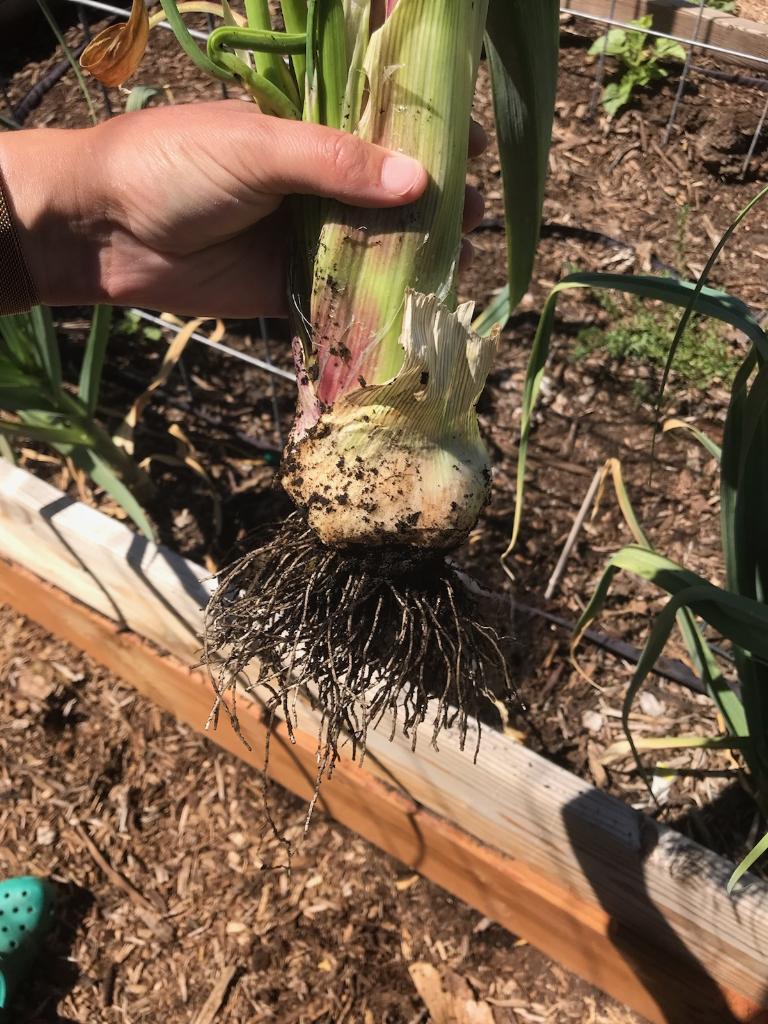
Varieties:
Gardeners may choose to plant store-bought garlic or purchase seed garlic(planting garlic) from a suitable stockist. If using store-bought garlic, buy organic. Garlic is often sprayed to inhibit sprouting. Therefore results for store-bought garlic may not be as predictable as seed garlic.
Garlic is divided into softneck types and hardneck types. Hardneck garlic requires cold temps to form bulbs properly. While they can be grown in the desert, it is not always predictable especially if there aren’t enough cold hours.
Softneck types are more forgiving of a mild winter and more reliable in our climate. They also store longer than the hardnecks. Both are grown in the same manner but harvesting is slightly different for both.
Recommended Softneck Varieties
Kays Backyard: Popular big pink artichoke type garlic that was found in a Sante Fe backyard in 1998. Classic Italian flavor
Inchelium: Has large purple bulbs and was discovered in Washington. It has a buttery finish and is the perfect variety for roasting.
Western Rose: A silverskin type that is one of the longest storing varieties. Perfect for braiding with a sharp garlic flavor.
Recommended Hardnecks Varieties
Music: A porcelain type with really large cloves. This is a hot/ spicy garlic and great for foods that have bold flavors and requires a strong garlic presence.
Russian Red: Originally from Russia, this romobocale is great for storing and has a very pungent flavor. Another variety that stands up to bold flavor.
Chesnok Red: Chesnok has a creamy sweet flavor and does where caramelized garlic flavors are required. This is the one to pair with roasted squashes, tomato soup, and light pasta dishes. It has a beautiful pink stripe on the papery skins and mid-sized bulb
There are many wonderful varieties to try, but we have listed just a few.
HOW TO GROW
- Planning for garlic planting begins in July-August when they are available online for pre-ordering. This is when garlic is typically harvested in other parts of the US. Garlic orders will arrive in September-October.
- For the best results, garlic needs to be vernalized before planting. This is a process for treating the bulbs with cold. It triggers correct bulb formation.
- Simply store in a paper bag in the fridge for 6 weeks. Some vendors may have been storing the garlic in cold storage already, check with the vendor before ordering. Also ensure that they can mail out your garlic in time to plant in October, taking into consideration, it may need to be vernalized.
- When it is time to plant remove from the bag and separate the cloves from the bulb. Do not peel the garlic. Set aside the fattest and best cloves for planting. Smaller cloves can be used in the kitchen or planted for garlic chives and green garlic.
- Add a tablespoon each of liquid seaweed, fish emulsion, and bicarbonate of soda to a quart of water. Soak the garlic cloves in this solution for 8-24 hours. The liquid seaweed and fish emulsion encourages root growth and provides essential nutrients for growth. Baking soda inhibits bacterial growth and diseases. While they could be soaked for 2-4 hours, the longer soak enables them to really “ marinate” in the solution, taking up all the goodness of the liquid seaweed and fish emulsion. Most of the cloves will swell up during this soak.
- Choose an area in the garden that gets at least 6 hours of sun. It may be necessary to use some sun protection once temperatures are above 85 degrees.
- Prepare the soil by adding quality compost and building sand, to make it light and well-draining. Garlic does not like heavy stodgy soil. Also, add in Earth’s Original Organics Magic Mix according to the label instructions.
- Space the garlic 6 inches apart to allow for good bulbing and to reduce competition.
- Plant the cloves with the flat side down, the side that was attached to the bulb. Green tops will sprout from the pointy top.
- Cover with mulch and water well. Do not water again until the soil is almost dry, Overwatering will rot the garlic.
- In a couple of weeks, some of the green leaves will appear and will continue to grow through the winter. They will benefit from a bit of liquid seaweed every two weeks.
- In early Spring(February) add another feeding or Earth’s Original Organics Magic Mix. This is when the garlic will put out the bulk of its leaves and an extra bit of nitrogen is beneficial.
- Do not pick the green leaves for cooking during the growing period. These leaves will dry over time and form papery skins around the bulb and cloves.
- If growing a hard neck variety, they will form garlic scapes, which is the garlic going to flower. When this happens, the plant will start to send energy from the roots up to the flower instead to make seeds. Therefore the garlic scapes will need to be picked to ensure lovely fat garlic cloves.
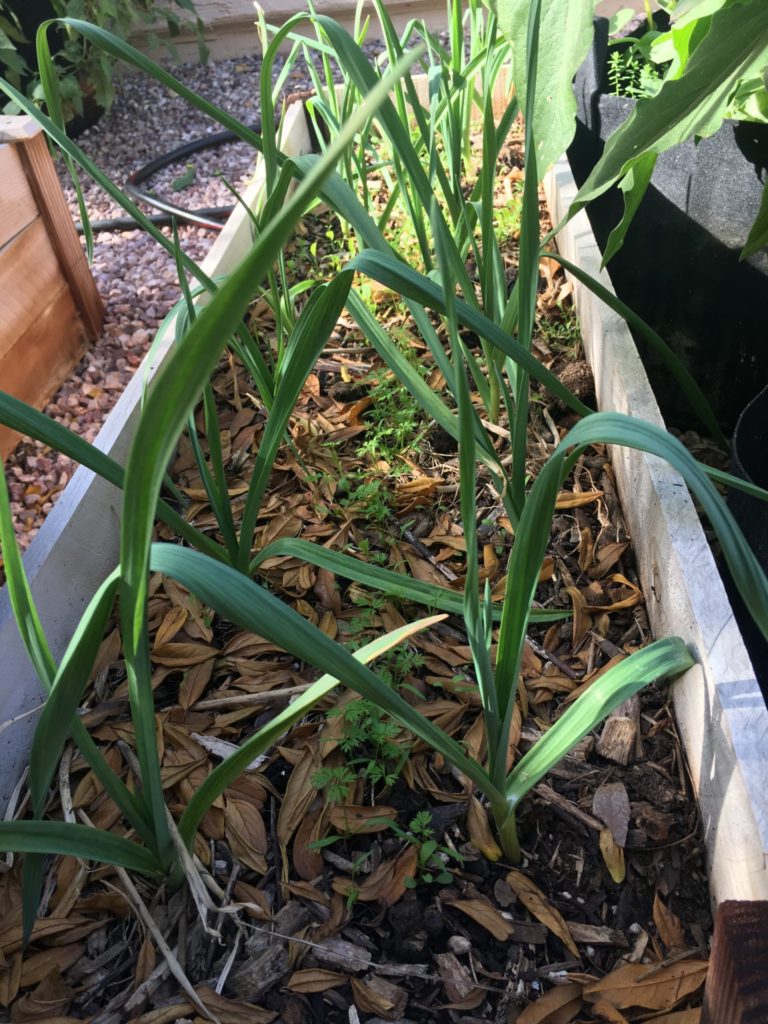
POSSIBLE ISSUES
Black Aphids
Mostly garlic repels bugs, however, black aphids can attack new tender growth. They tend to accumulate right at the central growth point and are hard to wash off with water or manually remove. Natural predators such as ladybugs, assassin bugs, and lacewings can keep populations in check. Using an organic pesticide may be needed, however, those can also kill beneficial insects.
This is due to store-bought garlic being sprayed with a growth inhibitor, insufficient nutrients, the weather being too hot with a late planting of garlic, or a variety that does not do well in hot climates. Follow the information in this blog to prevent these issues.
Fine Top Growth
This will show up as finer-looking blades, about the size of grass, and will be many. During our research, we found that this is due to too much nitrogen in the soil.
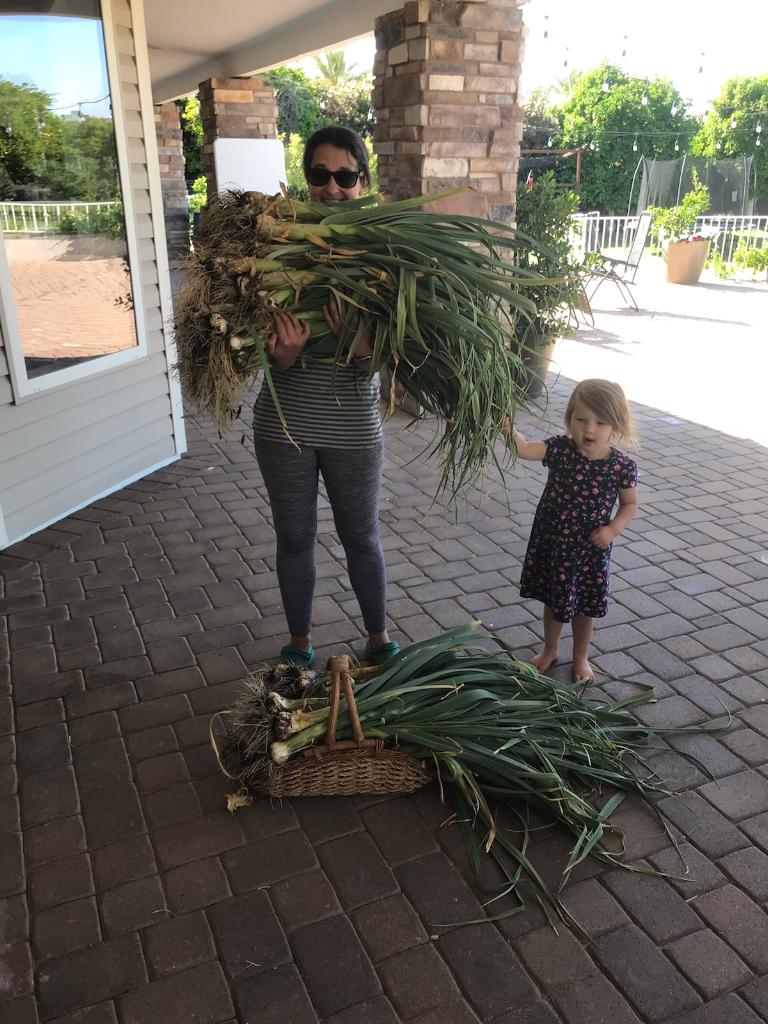
Good Companions
- Garlic makes an excellent planting companion. It is a common companion for roses to help control aphids. However, the sulfur compounds in garlic are also beneficial for the prevention of soil-borne fungal issues. Of course, great amounts of garlic would need to be planted.
- Garlic is a great companion in permaculture tree wells. They help repel borers in fruit trees. Plant thickly to benefit trees.
- Plant close to cabbage and other members of the brassica family to repel cabbage moths and cabbage looper caterpillars.
- Plant garlic with chamomile. The chamomile is said to improve the flavor of the garlic.
- Plant with tomatoes. In the desert climate, tomatoes and garlic are not planted in the same season, but with some planning, leave enough space between garlic plants to pop in tomato seedlings in spring. It will be beneficial to leave garlic sown with tomatoes and not harvest them as garlic is said to reduce spider mite populations by around 50%. Keep in mind, it will not completely prevent a spider mite issue but will help to reduce it.
Keep garlic away from peas, asparagus, parsley, sage, and strawberries. Contrary to the belief that garlic will repel pests in strawberries, it does reduce yields in strawberries. I am on the fence about planting garlic with beans. While most gardening literature suggests not to, recent research suggests this may not be true. I have had garlic and onions grown right next to peas and fava beans accidentally. There were no negative effects on the peas or beans.
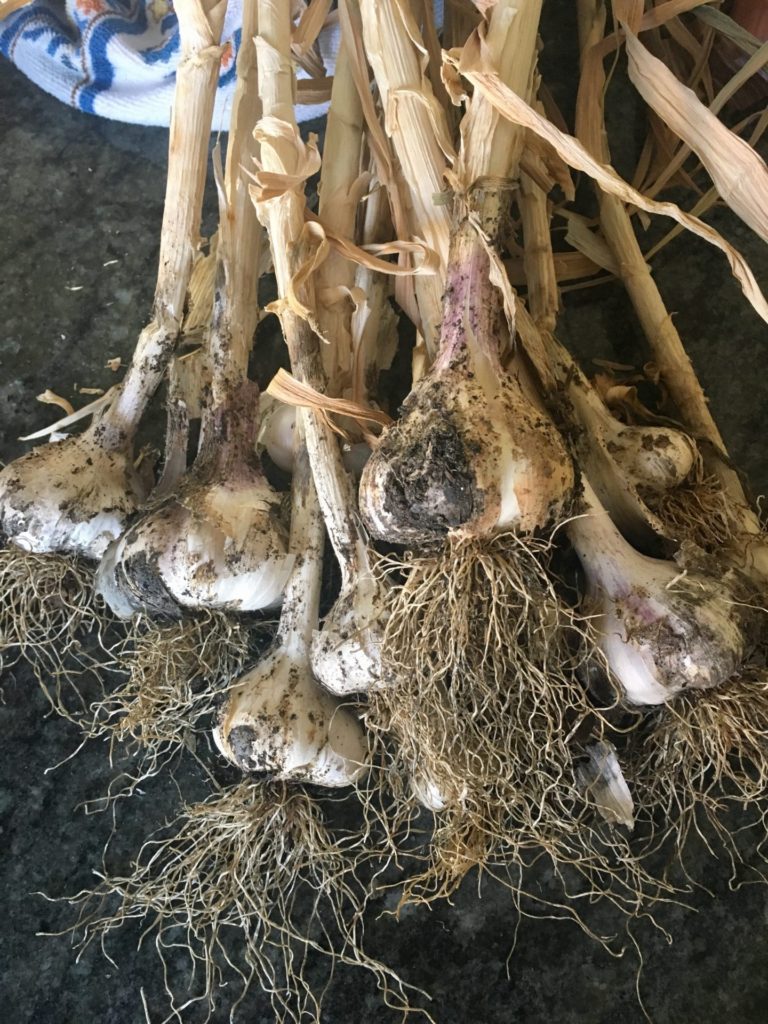
Harvesting
In our low desert climate, garlic is harvested much earlier than in other parts of the USA. By late May to June, it is normally ready. Hold back on water for 2-3 days before harvesting, this will help to lift clean bulbs from the soil. Once the bottom 3-4 leaves on the hardneck varieties start to turn brown, dig up a bulb or two to check the size of the bulbs. Softneck varieties will fall over when they are ready. Never pull up the garlic, you risk breaking the leaves off from the root, which will affect the curing process., Rather use a hand fork to gently lift them out of the soil. Leave the bulbs out in the shade for a day or two, then finish the curing process indoors. Garlic will need to be cured in a low humidity cool area. The kitchen is too humid and the garage is too hot. Once the necks are completely dry, trim off all the roots to tidy them up. For hardneck, you can down the leaves and store the bulbs. Keep in mind, if they are kept too long in the fridge, they will start to sprout. Softneck garlic can be left with the tops intact and braided before storing.
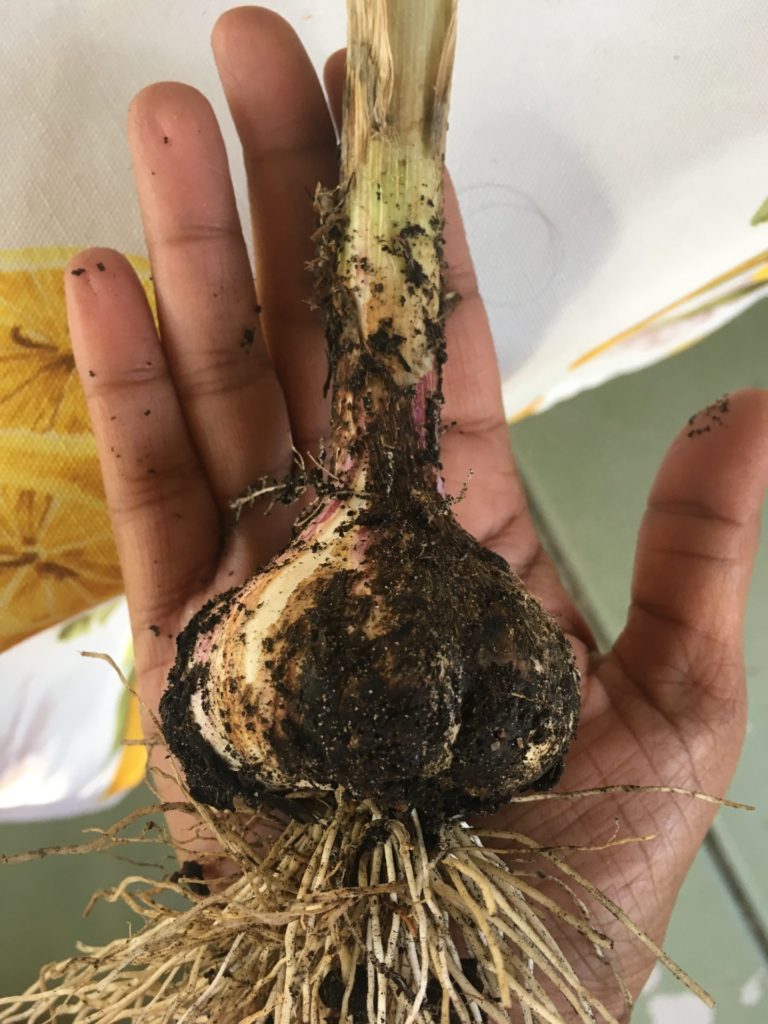
Feeding/Fertilizing
At planting use a balanced organic fertilizer such as Earth’s Original Organics Magic Mix. This is slightly higher in nitrogen than the other nutrients. In early Spring(February) add another feeding or Earth’s Original Organics Magic Mix. This is when the garlic will put out the bulk of its leaves and an extra bit of nitrogen is beneficial.
Saving Seed
Hardneck types of garlic produce a scape that will flower and produce garlic bulbils if not picked. If left to dry, these will produce actual garlic seeds, however, they are extremely difficult to germinate, and therefore garlic is propagated from the bulbs rather than seed unless a garlic breeder is trying to breed new varieties. The bulbils have a delicate garlic flavor and some crunch Sprinkle on salads, eggs, and fish. I love using them when making vegan scallops from King oyster mushroom stems.
Green Garlic and Garlic Scapes
Green Garlic and garlic scapes are covered in the kitchen of cooks and chefs. Garlic scapes once harvested can be used in a variety of ways in the kitchen. Grill it, add to pasta, make pesto, saute or make into a sauce.
Small cloves of garlic can be planted in a pot on a window ledge, and as the leaves grow in, these can be harvested to use as a garlic chive. However, the whole garlic can be pulled up around February, this young garlic is referred to as green garlic. It has a milder flavor than a cured fully grown bulb.
Use in vinaigrettes, pesto, soup, sauteed spring vegetables, add to salads or use in savory baked goods.
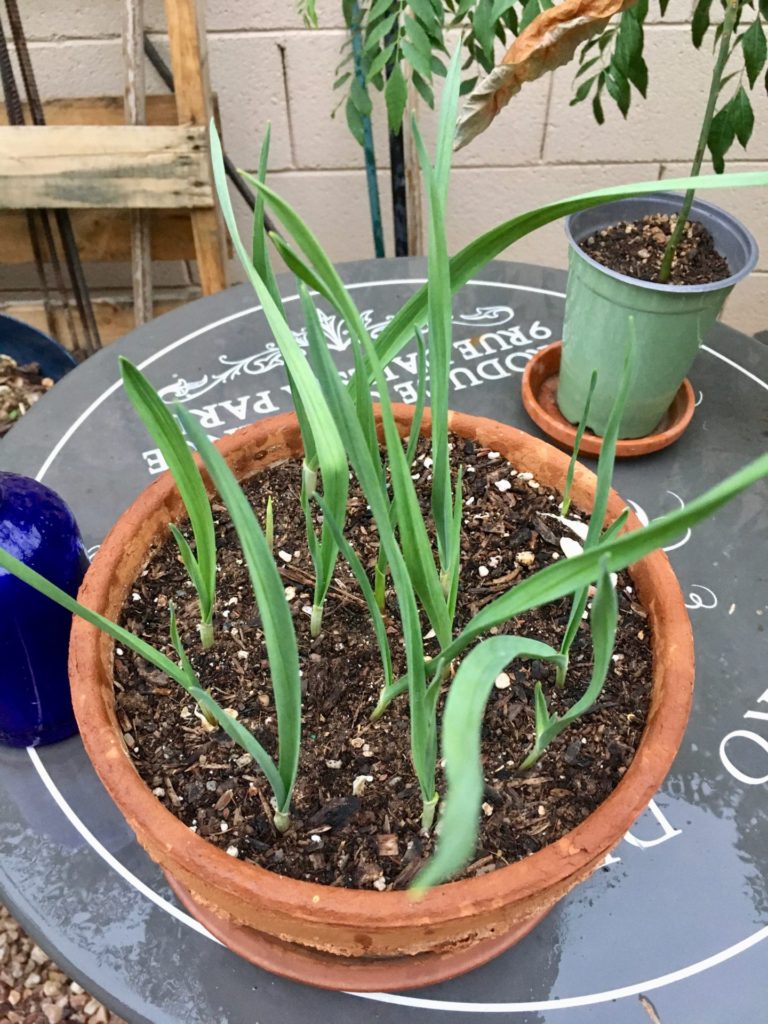

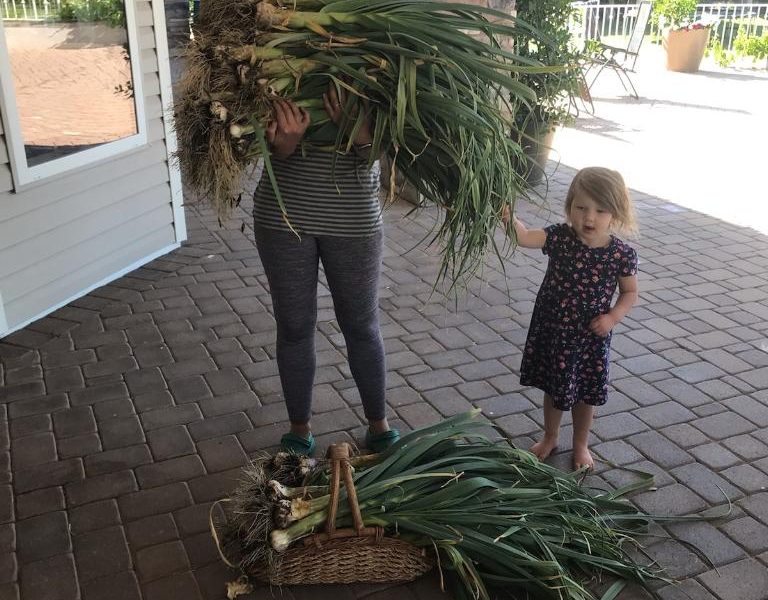
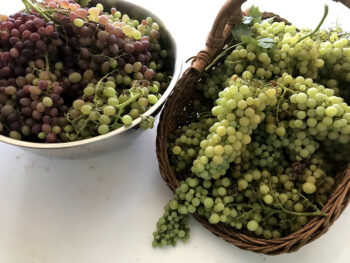
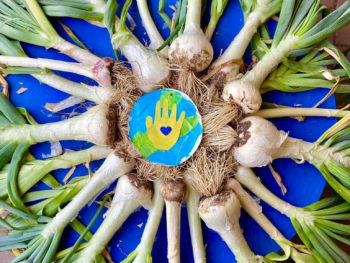
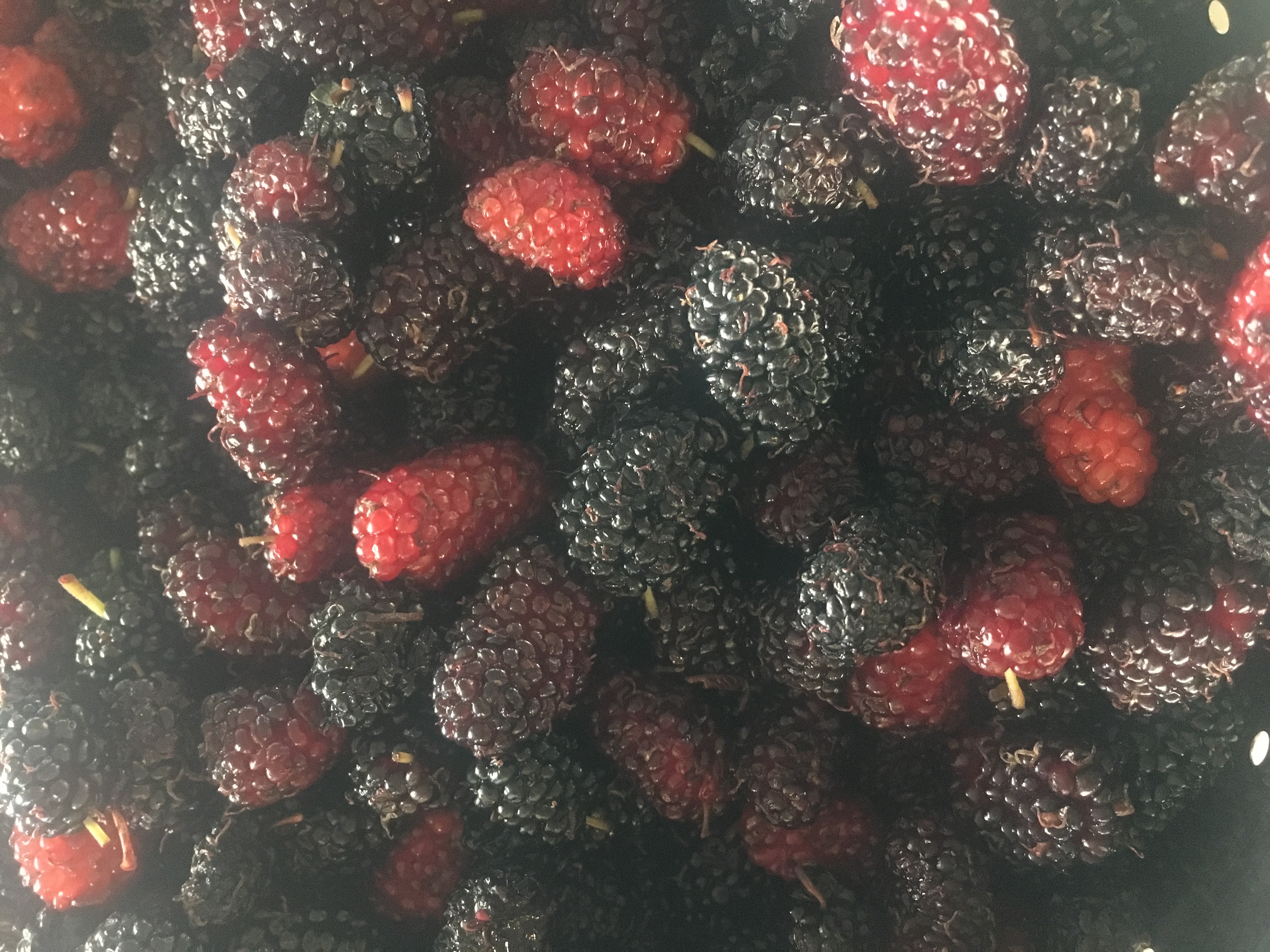
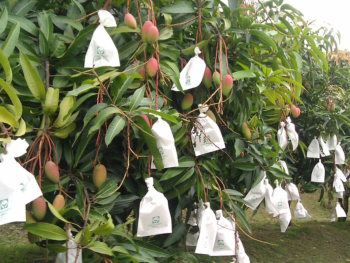
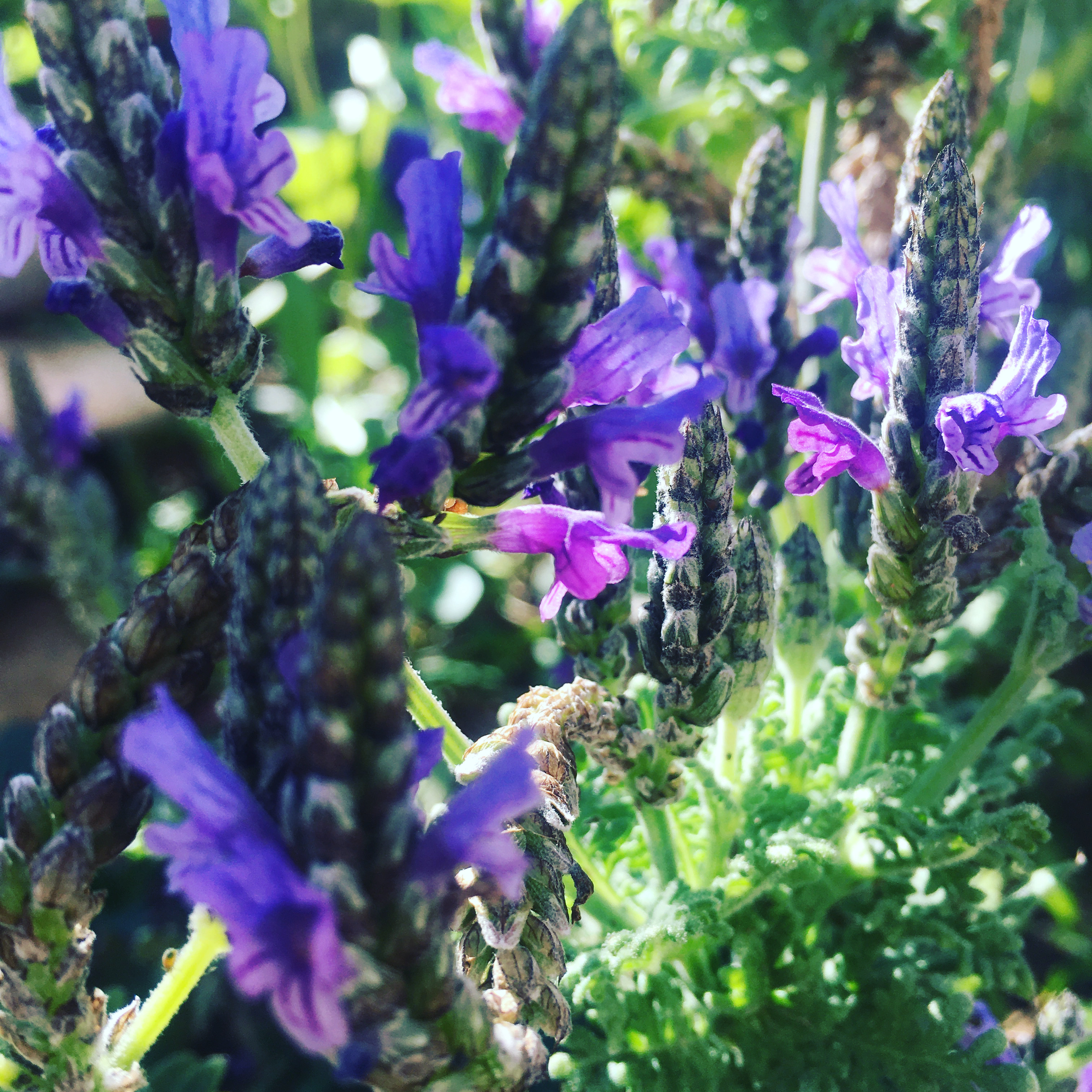
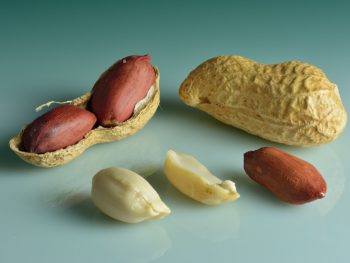
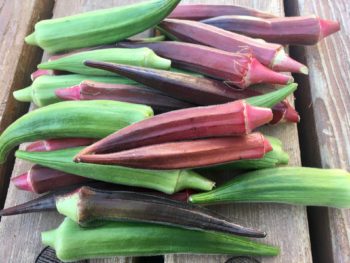
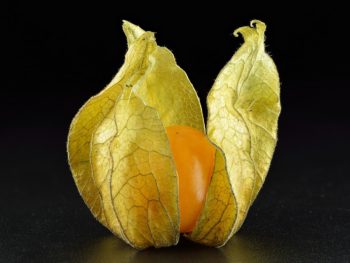
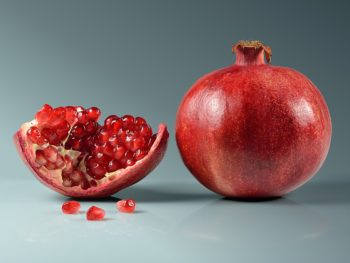
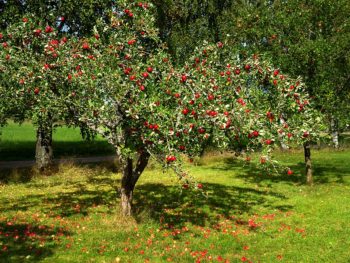
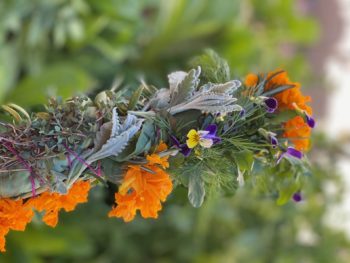
 Growing A Year-Round Chicken Forage Garden In The Desert
Growing A Year-Round Chicken Forage Garden In The Desert